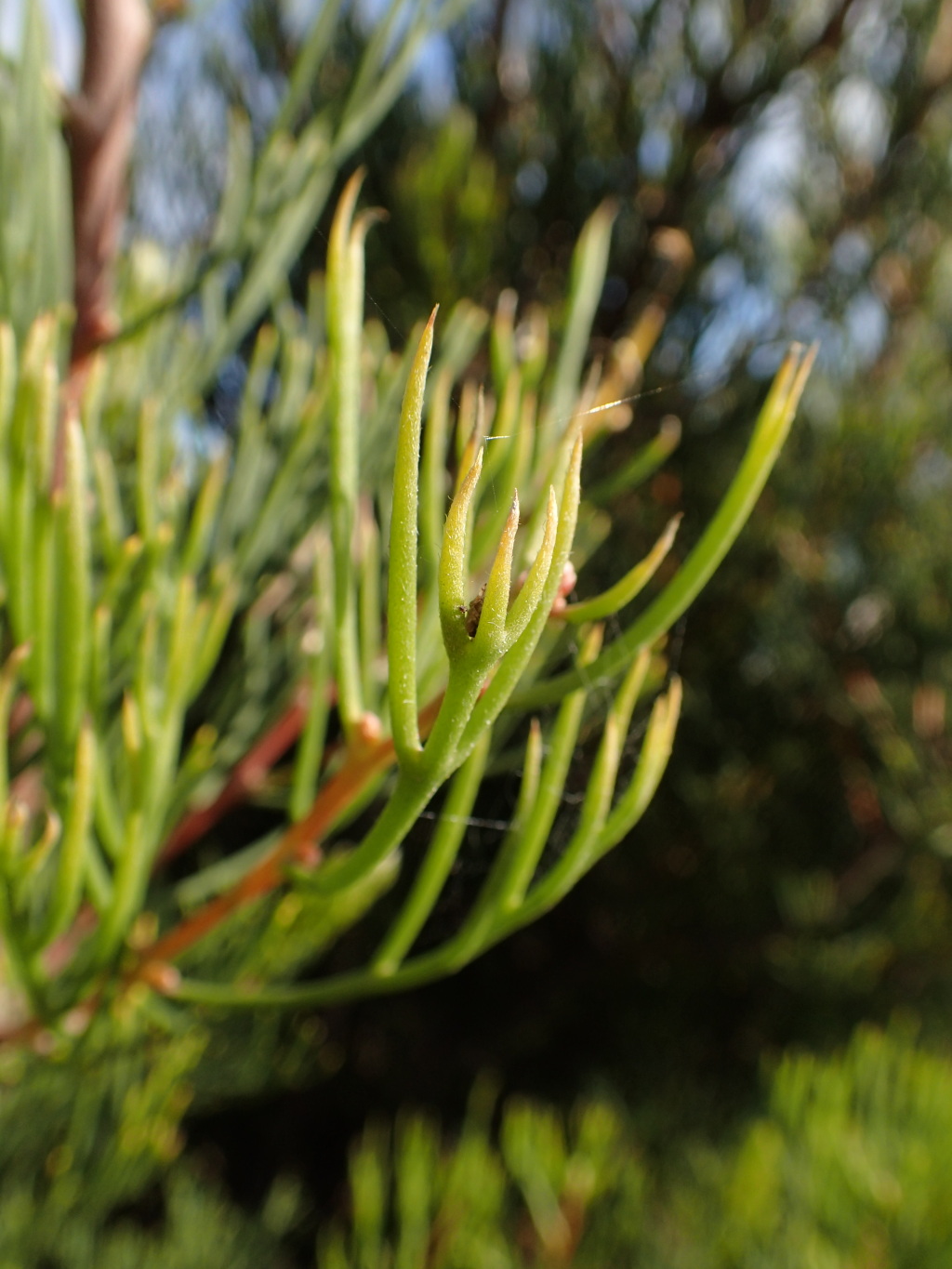Hakea drupacea
(C.F.Gaertn.) Roem. & Schult. Sweet-scented HakeaDense, spreading or erect shrub or tree, 1–4 m high; branchlets appressed-pubescent. Leaves 3–13 cm long, 1–1.6 mm wide, usually divided into 2–8 terete segments, grooved above or not, glabrous or appressed-pubescent; mucro 0.5–1.5 mm long. Inflorescence 46–84-flowered; rachis 17–26 mm long, appressed-pubescent, with white or pale brown hairs; pedicel 4–10 mm long, glabrous; perianth straight in bud, 3–4 mm long, glabrous, pale pink ageing white; pistil 3.5–4.5 mm long; pollen presenter an erect cone. Fruit obliquely ovate on recurved stalk, 2–2.5 cm long, 1.6–1.9 cm wide, black, warted; horns 2–4 mm long; seed not occupying whole valve face, 16–20 mm long, winged partly down one side only, black or grey. Flowers Mar.–Jun.
Wim, GleP, VVP, GipP, OtP, WaP, CVU, DunT, OtR, Strz. Also WA (native), SA (naturalised). Commonly planted as a hardy, salt-tolerant shrub in coastal areas, now naturalised at several locations (e.g. Portland, Anglesea, Mornington Peninsula) particularly through regeneration following 1983 bushfires.
Barker, R.M.; Barker, W.R.; Haegi, L. (1996). Hakea. In: Walsh, N.G.; Entwisle, T.J., Flora of Victoria Vol. 3, Dicotyledons Winteraceae to Myrtaceae, pp. 870–882. Inkata Press, Melbourne.
 Spinning
Spinning



